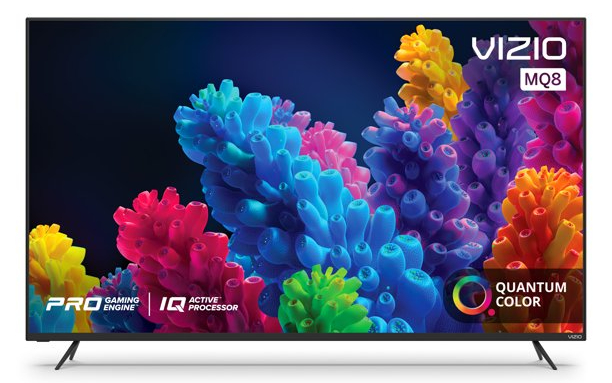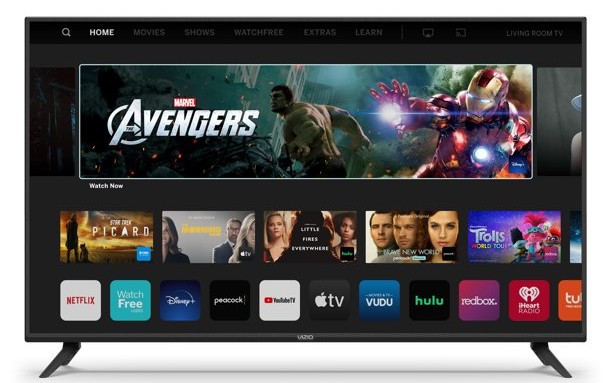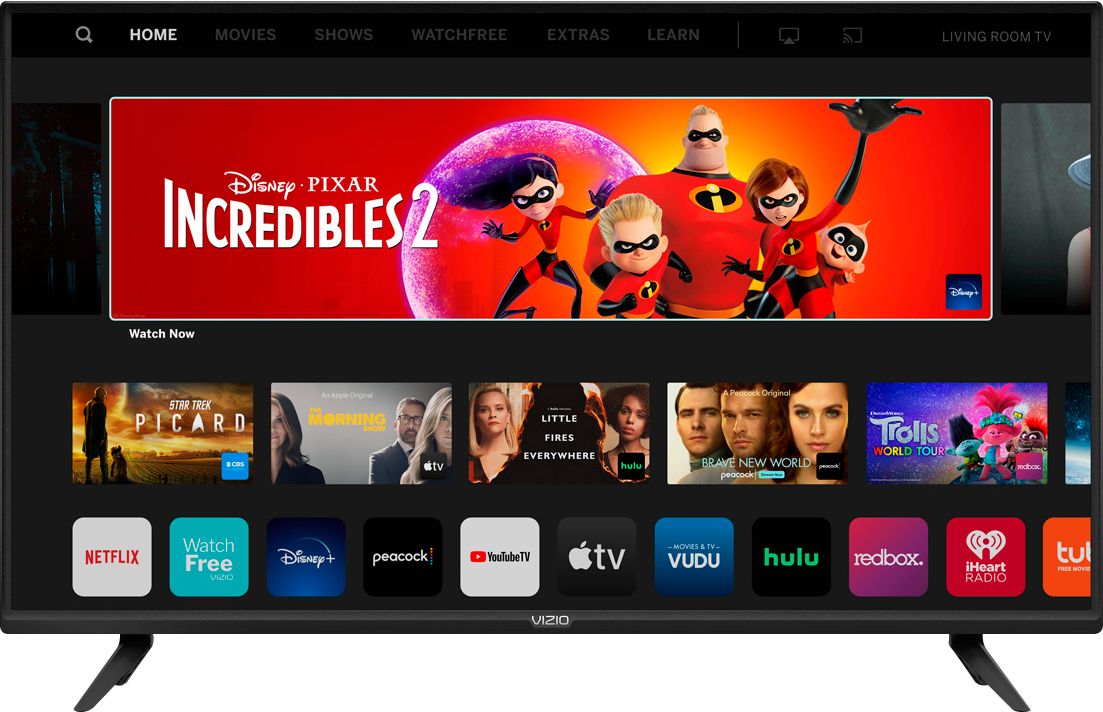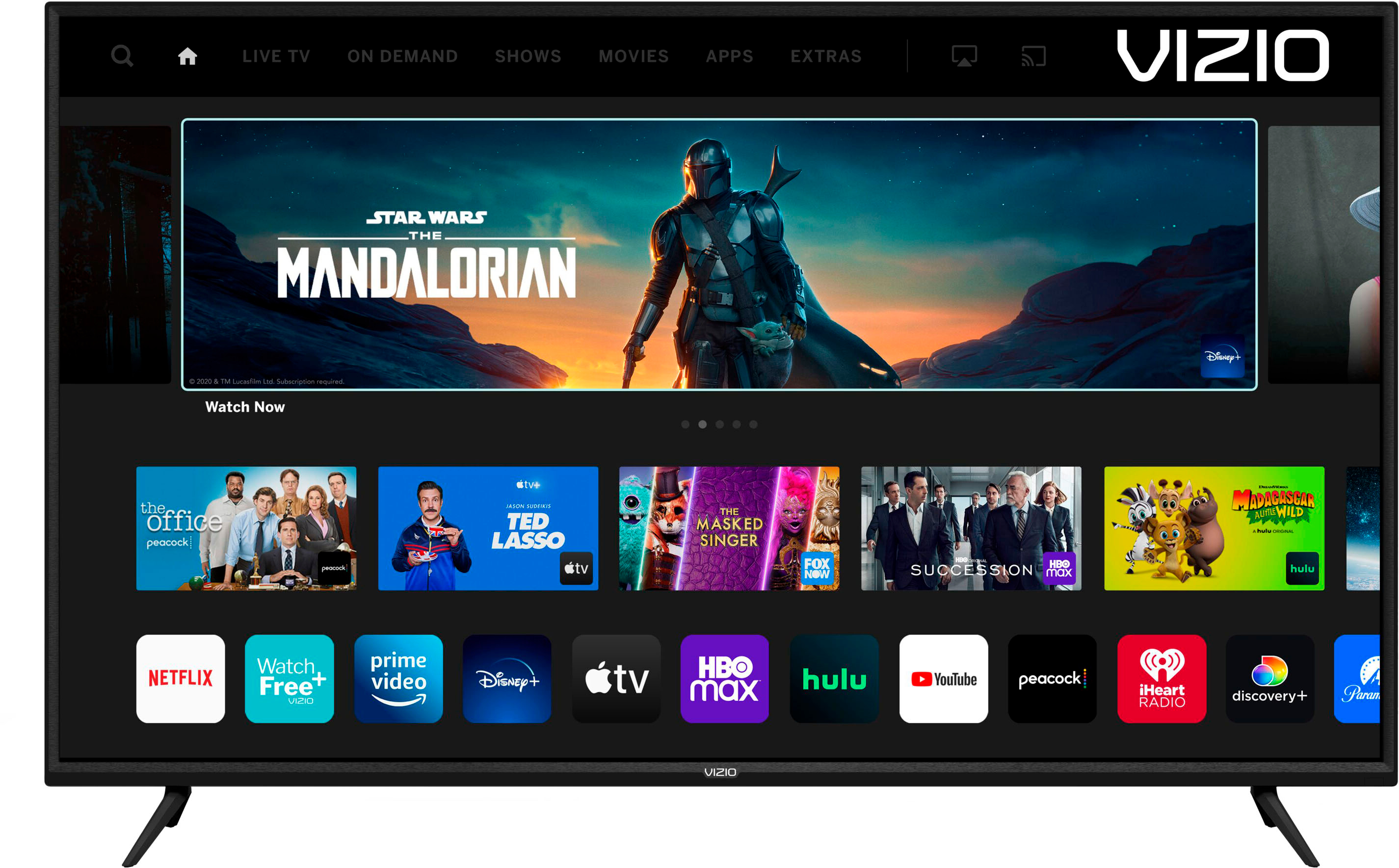Should you buy a Vizio TV?
Vizio 4K TVs are impressive on paper and tend to come with tempting price tags. But should you buy one?

Vizio has been making budget TVs in the US for such a long time that is has become somewhat of a household brand at the affordable end of the TV market. It offers up a wide variety of TVs at low prices, competing with other budget brands such as TCL, Hisense, Toshiba, Amazon and Insignia. But are Vizio TVs any good, and are they worth buying over other brands of TVs?
Considering how many different TVs Vizio makes, that can quickly become a confusing question to answer, but below we have broken down the brand’s offerings into its three core lines: the 1080p D-Series, the 4K V-Series, and the premium QLED MQ6 Series. These TVs scale up in terms of price, features and specs, providing something for everyone.
While we haven’t gone the full 12 rounds with these Vizio TV and therefore cannot wholly vouch for their picture quality, there is a fair bit we can learn about them and their relative value in the crowded market based on their specifications. So, if you’ve ever wondered if a Vizio TV was worth the money, sit back, strap in, and read on to learn whether you should buy a Vizio TV in 2022…
Should you buy a Vizio TV? The short answer…

Vizio’s TVs typically offer up competitive features, specs and prices – whether you’re looking for a small, cheap 1080p, a value-packed 4K set, or a slightly more premium TV with premium QLED panel technology that still doesn’t break the bank.
On paper, Vizio TVs often compare favorably to other budget sets, offering wider HDR support for just a couple of bucks more. What’s more, they are often on sale and can be picked up at bargain prices, so we’d keep an eye out for a Vizio TV deal at your favorite online retailer.
That said, if you’re a big gamer, Vizio TVs don’t really come with premium gaming-focused features like ALLM, VRR, or 120Hz support which are often the reserve of higher-priced TVs. So you might want to opt for a different offering if playing games is a big part of your TV usage.
All told, Vizio TVs look to be generally strong options. With competitive prices and features, these sets are worth keeping an eye on if you’re in the market for a budget TV.
The latest hi-fi, home cinema and tech news, reviews, buying advice and deals, direct to your inbox.
That said, if you want a tried and tested budget TV that we have fully tested and can heartily recommend, we would point you to our best budget TV Buying Guide.
What do Vizio TVs offer?

Vizio TVs slot right into the slew of budget TVs offered up by other competitor budget brands. You’ll find cheap 1080p TVs, standard mid-range 4K TVs, and more expensive QLED TVs that still don’t manage to cost as much as QLEDs from brands like Samsung.
These TVs will come with familiar functionality, such as smart apps so you can stream whatever you like, VESA wall mounting, Alexa compatibility and more, while some will also come with HDR and audio solutions like DTS Virtual:X. All told, this is just about what you’d expect from TVs at the more budget end of the market.
However, you will be missing out on premium features like ALLM, VRR, and 120Hz for gamers as well as higher-end panel displays like OLED (which is a rival to QLED). If you’re just looking for a set to casually play some games on or one that simply offers a lot of screen real estate for not much money, Vizio TVs can most definitely offer that.
In terms of pricing, Vizio sets more or less meet the expectation of what a budget TV in the modern day should cost, starting out at less than $200 for a 1080p set, moving on to under $400 for a 4K TV, and running you less than $500 for a QLED set.
Ultimately, if you’re looking for a relatively basic modern TV that doesn’t sacrifice too much in the way of picture technology support and streaming smarts, Vizio TVs can get that job done handily. But if you’re looking for a more premium experience or want to pay as little as possible, Vizio TVs might not be the right fit for you.
Should you buy a Vizio D-Series?

- Sizes: 32-inch, 40-inch
- Display type: LED
- Resolution: 1080p
- Refresh rate: 60Hz
- HDR: None
- Audio: DTS Virtual:X
Vizio’s D Series is the brand’s most basic line of TV. The D Series comes in two sizes, has 1080p LED panels that run at 60Hz, and has smarts built-in so you can stream whatever content you’d like without having to buy a separate video streamer. All told, this is about what you’d expect from a basic 1080p TV in 2022.
The D Series does manage to include 1080p support on both of its models which is unusual, as most budget brands opt for a 720p display for their smallest, cheapest TV. 720p really can’t keep up in the modern age, but 1080p fairs better. While some 1080p TVs from other budget brands manage to pack in HDR, it’s not as big of a deal at lower resolutions like 1080p as it is for 4K ones.
The D Series starts off at $190 for the 32-inch, while the 40-inch will cost you a little more. This is definitely cheap for TVs, but as far as HD TVs go you can find cheaper sets. For example, TCL’s HD TVs start off at $150 for the 720p 32-inch and $200 for the 1080p 40-inch.
With a TV sale, however, you may even be able to find a Vizio that matches the price of a similarly spec’d TCL, so it’s not a terrible buy for an HD TV. Generally, we recommend opting for a 4K set. 4K TVs won’t cost you much more these days, and they usually come with more features (like HDR, too). It will make a difference being able to watch 4K content (which is pretty prolific these days) and even if you don’t watch much material in 4K, 4K TVs tend to have pretty decent upscalers inside to make HD content look good.
Should you buy a Vizio V-Series?

- Sizes: 58-inch, 65-inch, 70-inch, 75-inch
- Display type: LED
- Resolution: 4K
- Refresh rate: 60Hz
- HDR: HDR10, HDR10+, HLG, Dolby Vision
- Audio: DTS Virtual:X
- HDMI: ARC
The V-Series is the company’s flagship mid-range 4K TV. These TVs come packed with 4K support and robust HDR integration on top of a familiar LED display, 60Hz refresh rate, and DTS Virtual:X support – much like the D-Series. Naturally, you’ll also get smarts to stream all your favorite content, too, without an additional purchase.
In terms of HDR, the V Series gets you the full suite: HDR10, HDR10+, HLG and Dolby Vision. That’s great news as TVs of this caliber and price don’t always include the full spread of HDR support, often missing out on HDR10+ or Dolby Vision, or both. For hardcore gamers, though, outside of HDMI 2.1 support, you won’t be getting next-gen gaming features such as ALLM, VRR, or 120Hz support. So while you can hook up a PS5 to the V-Series, you won’t be getting the best gaming experience out there.
These TVs start off at $399 for the 58-inch model, which is just about what you’d expect from this class of TV. For example, a similarly spec’d TCL 4-Series will cost you $380 for the 58-inch model, but the 4-Series won’t come with HDR10+ or Dolby Vision support where the Vizio will.
If you’re looking for a modern 4K TV that comes with just about every expected feature you could want, the V-Series is a strong choice, especially if you find a set on sale.
Should you buy a Vizio MQ6 Series?

- Sizes: 43-inch, 55-inch, 65-inch, 70-inch, 75-inch
- Display type: QLED
- Resolution: 4K
- Refresh rate: 60Hz
- HDR: HDR10, HDR10+, HLG, Dolby Vision
- Audio: DTS Virtual:X
Vizio’s MQ6 is the brand’s more premium QLED line of TVs. These TVs all manage to pack in QLED displays over Vizio’s traditional LED displays alongside the same robust HDR support as the D Series and the DTS Virtual:X support you see in other Vizio TVs. Basically, you’re getting all the features of the D Series plus a QLED display. For the uninitiated, QLED displays are like next-gen LED displays, promising brighter, more vivid and colorful pictures. While we haven’t tested a Vizio QLED TV, we have admired the panel technology in other sets from, for example, Samsung.
The MQ6 Series is a competitive set on paper. You’ll get to enjoy high-resolution 4K/HDR content on all the streaming services you can dream up thanks to the MQ6 Series’ smarts, and you’ll have no trouble connecting a PS5 or Series X (though again, you won’t get features like ALLM, VRR, or 120Hz that hardcore gamers may want).
What’s more is that the MQ6 Series starts off at just $350 for the 43-inch model, making it one of the very cheapest QLED 4K/HDR TVs out there at its current RRP. In general, not a lot of brands offer up 43-inch models of their QLED TVs; a competitor brand like TCL starts out selling QLEDs at $430 for a 50-inch model.
If you’re looking for a cheap QLED TV, the MQ6 Series is one of the few contenders on offer and probably worth a punt if your budget doesn’t stretch to the more premium-branded offerings – especially if you nab one at a discount.
MORE:
Check out the Best TCL TVs: Are they any good? Which are the best deals?
Persue the Best 4K and OLED US TV deals
Read up on the Best Samsung TVs
Ruben is a long-time freelance consumer technology and gaming journalist, and was previously a Staff Writer at What Hi-Fi?. Since 2014, Ruben has written news, reviews, features, guides, and everything in-between at a huge variety of outlets that include Lifewire, PCGamesN, GamesRadar+, TheGamer, Twinfinite, and many more. Ruben's a dedicated gamer, tech nerd, and the kind of person who misses physical media. In his spare time, you can find Ruben cooking something delicious or, more likely, lying in bed consuming content.

